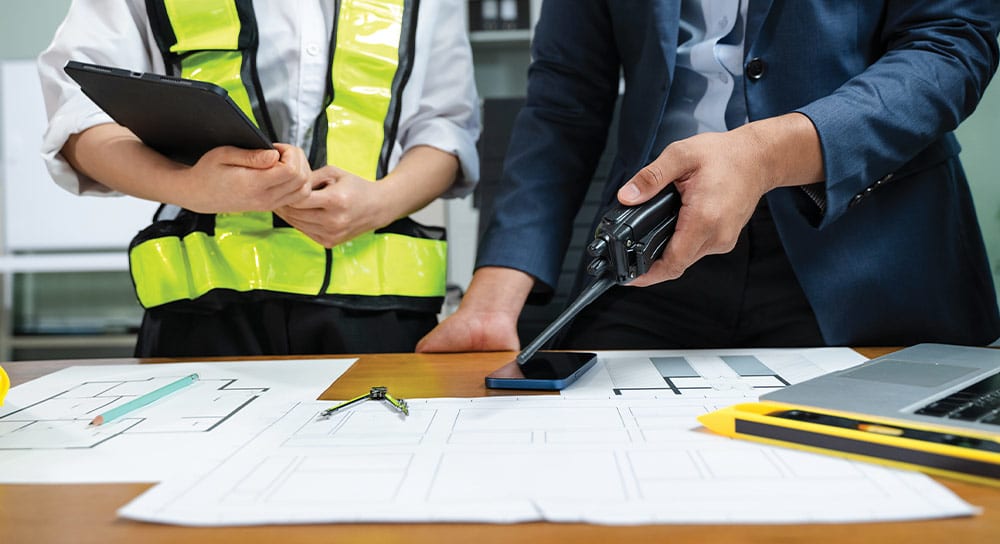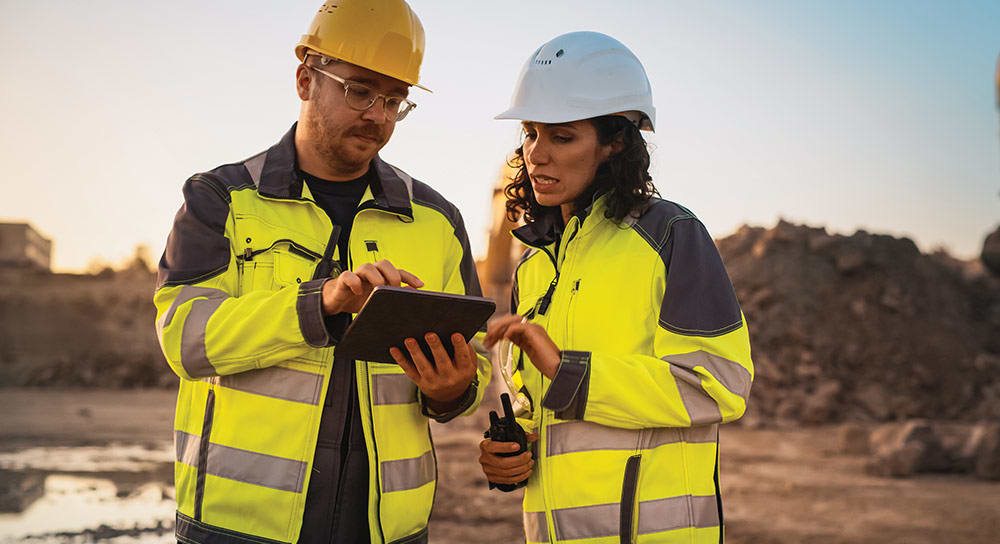The term “digital twin” has become one of the biggest buzzwords in industries ranging from building operations, manufacturing, architecture, and more. But what exactly is a digital twin, how is one used, and what are the concerns associated with creating and maintaining these tools? In this blog post, we’ll explore these questions in greater detail.
What is a digital twin?
A digital twin is a model of a physical entity like a building, assembly line, or even a city that is updated with live or near real-time data. Digital twins function like the real entity that they represent, providing an environment in which people can observe and analyze the entity and conditions within it.
While digital twins are often three-dimensional models, they don’t have to be. They can be two-dimensional models or even a table of data. The key is that the digital twin is continually updated with information, allowing users to mimic a real environment and understand what’s going on there.
How do organizations use digital twins?
At a high level, digital twins support data-driven decision making. They provide another layer of information for evaluating problems and potential solutions. Here are a few examples of how digital twins can be used:
- Monitoring environmental conditions within a building. Sensors are a common way to feed real-time data into digital twins. This information can be used to monitor the temperature of different rooms in a facility, whether lights are on or off, or the occupancy of a building.
- Tracking assets. Some organizations place sensors on equipment and use digital twins to track their location in a building.
- Comparing renovation options without damaging the physical structure. It’s possible to deconstruct a virtual representation of a building and put it back together without changing anything in the real world.
- Identifying opportunities for continuous improvement. Digital twins help teams analyze the impact of decision or operating decisions, learn from mistakes, and improve in the future.
Things to Keep in Mind When Creating a Digital Twin
Before creating a digital twin, it’s important think about a few questions upfront:
- Will your IT infrastructure support it? Some organizations can’t store data in the cloud due to security issues. Sending facility data to the cloud via a live feed may represent an unacceptable risk. It’s best to identify whether this is the case for your organization before embarking on a digital twin project. Without an Internet connection, a digital twin will have limited use.
- How will you use a digital twin and what information needs to be in it? There is no standard definition of what a digital twin is. As a result, organizations must clearly articulate how they will use this type of tool. The definition must also be flexible. Digital twins need to evolve with the buildings they reflect, so they match. If a digital twin is no longer consistent with current building conditions, it loses much of its value.
- How will you create your digital twin? During the design phase of a new building projects, architects and engineers often create a model. In the construction phase, however, contractors commonly rely on fabrication or trade models. Once the building is complete, the owner must decide how to unify information to create a digital win. Reality capture can help by taking a 3D scan of the building conditions and creating a model based on the point cloud data. With this approach, it doesn’t matter what models were used for coordination, construction, and design.
- Are you keeping the human element in mind? The goal of a digital twin is to identify actions that a human needs to take, whether that’s a building decision, building maintenance, or some other thing. When designing a digital twin, stay aware of the human element and focus on helping people be more effective and efficient in their work.
- What is the plan for ongoing maintenance of the digital twin? The technology used to create a digital twin will evolve. Organizations must be prepared to handle hardware and software updates or to replace equipment over time.
Conclusion
Digital twins are the logical next step on the journey to analyze and act in the built world. If your organization is considering how to incorporate digital twins into your operations, but are unsure where to begin or how to proceed, we’d love to help. IMAGINiT has worked with numerous clients to develop digital twin strategies, deploy the critical technologies, and train the workforce to work with these tools most effectively. To learn more, please contact us.






















